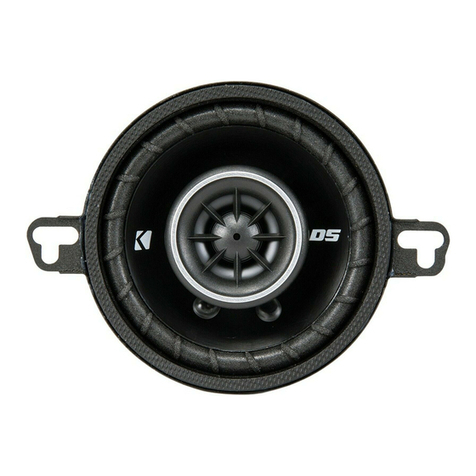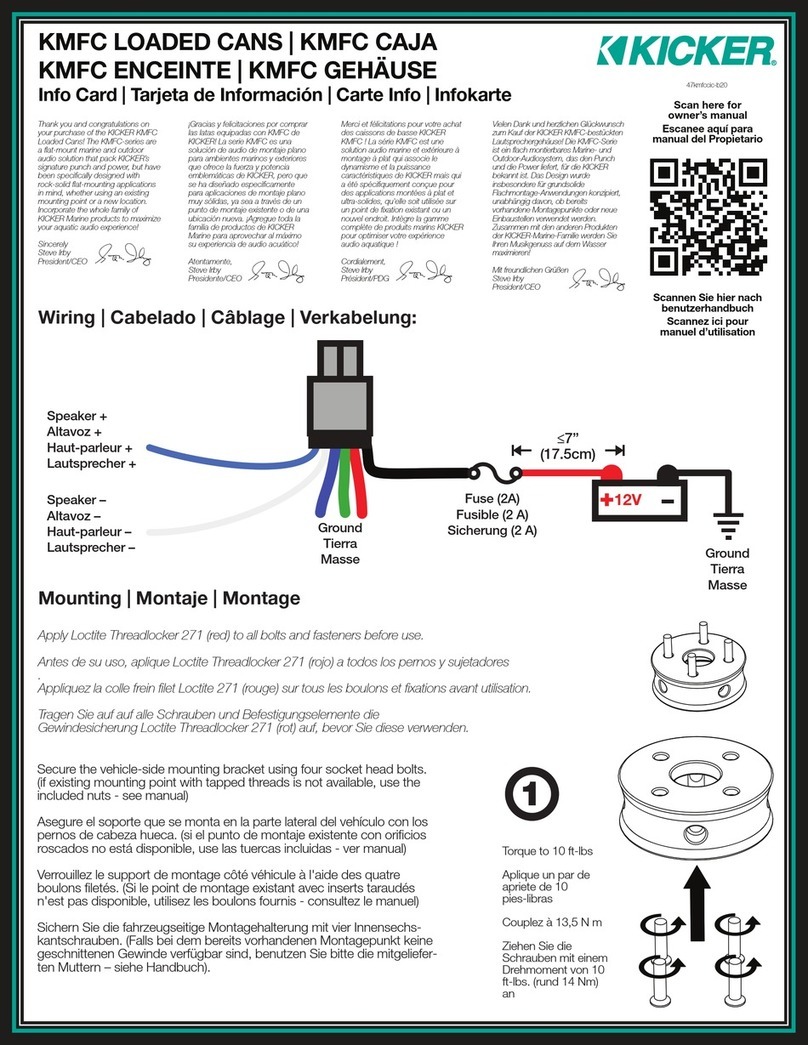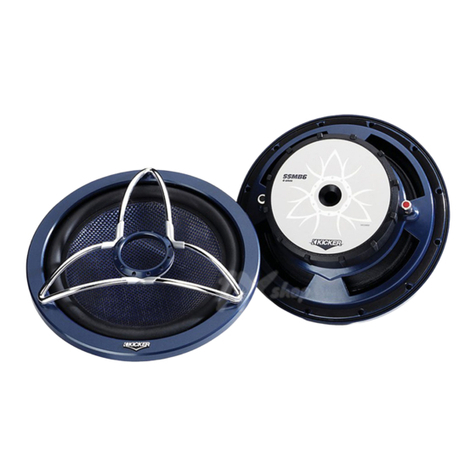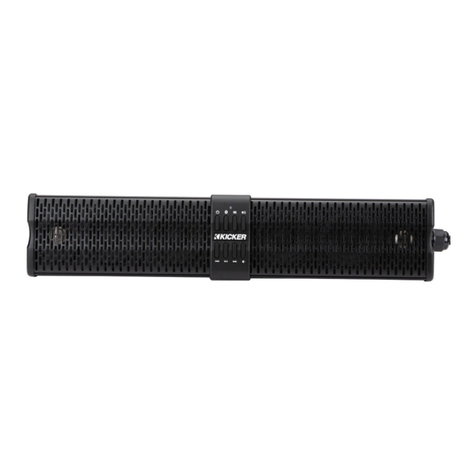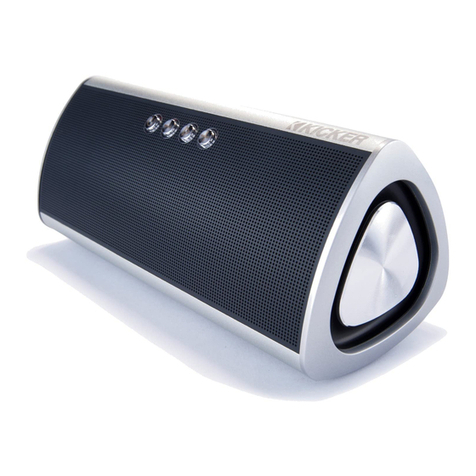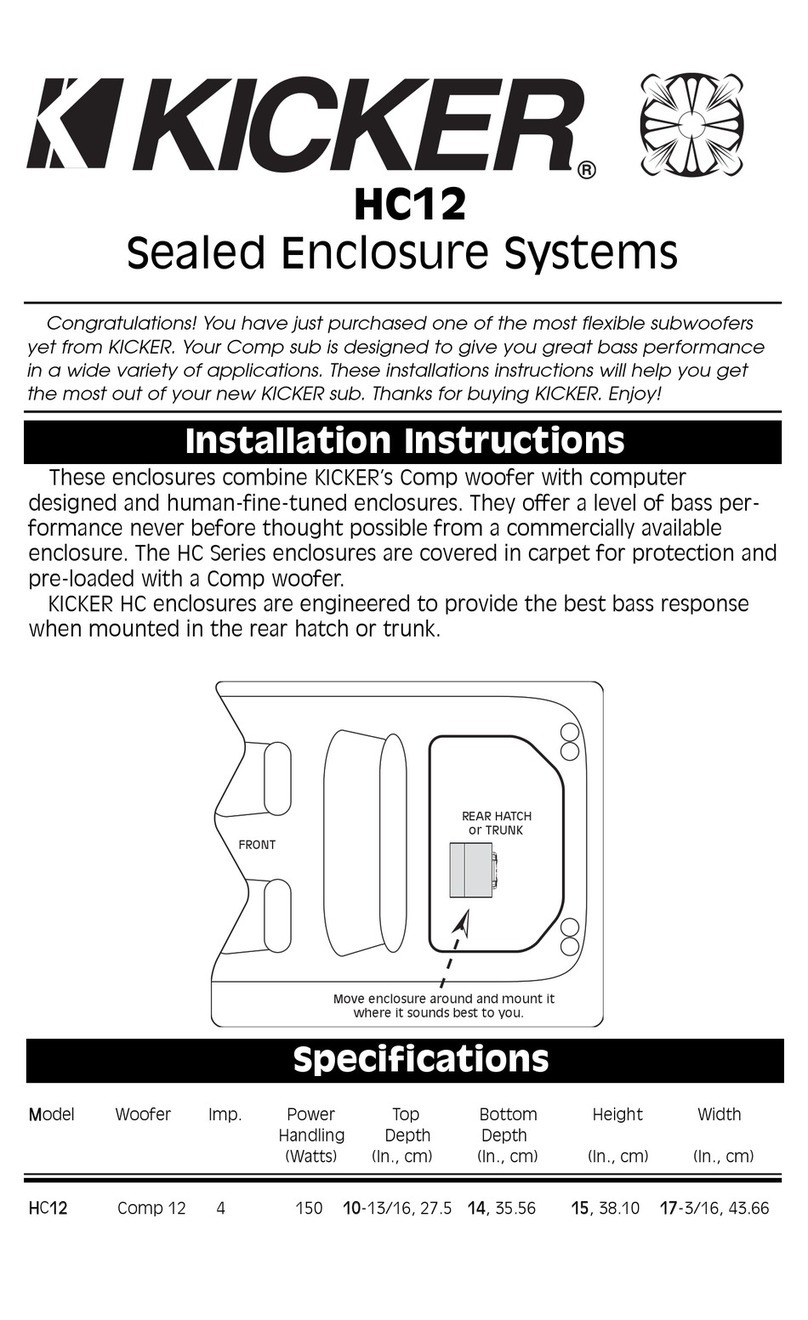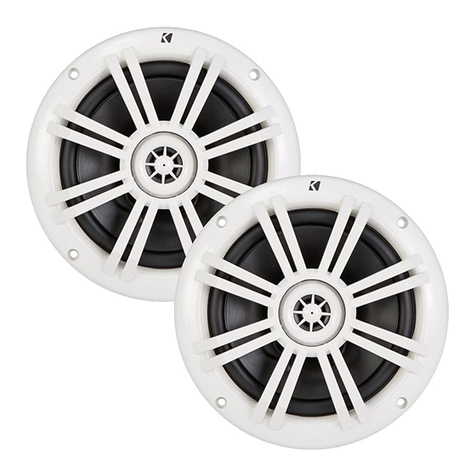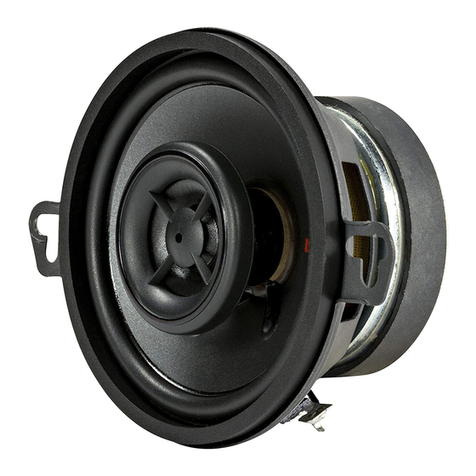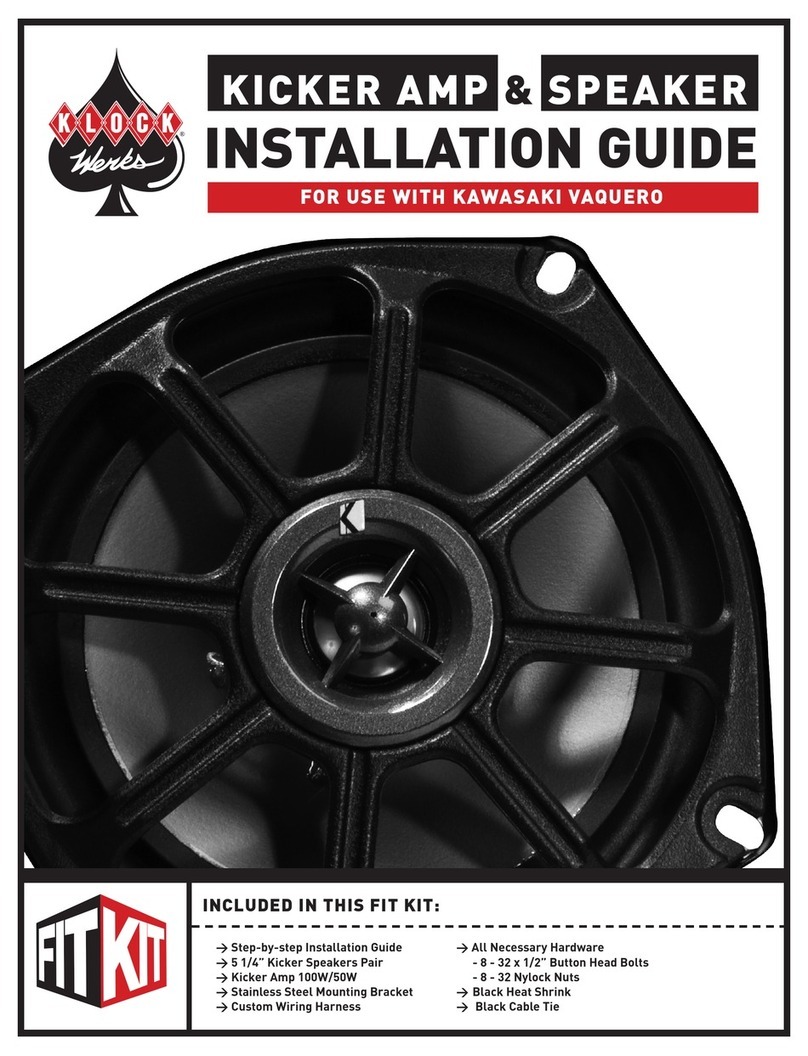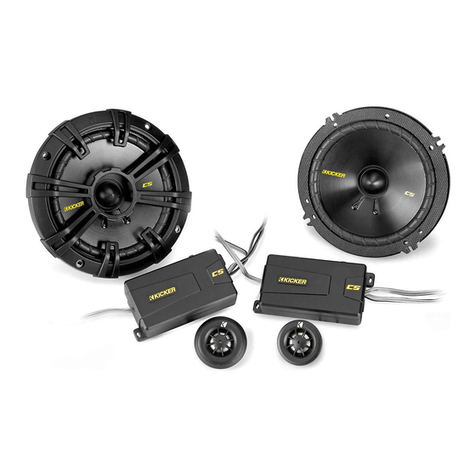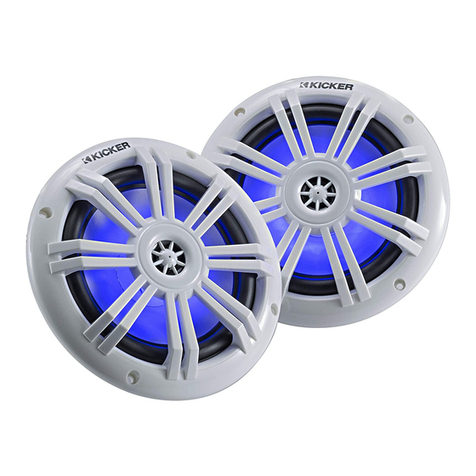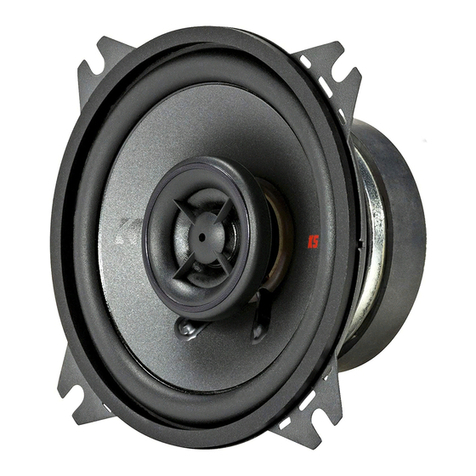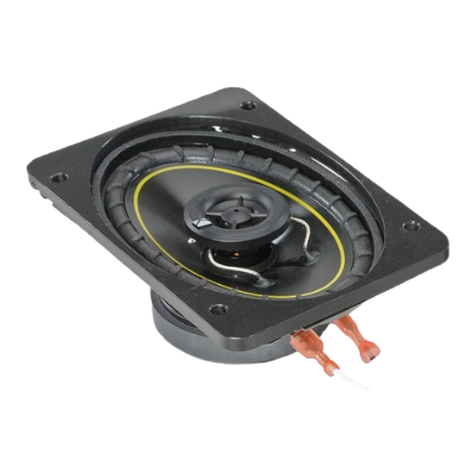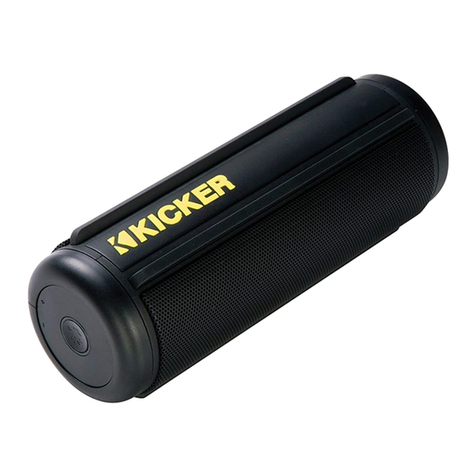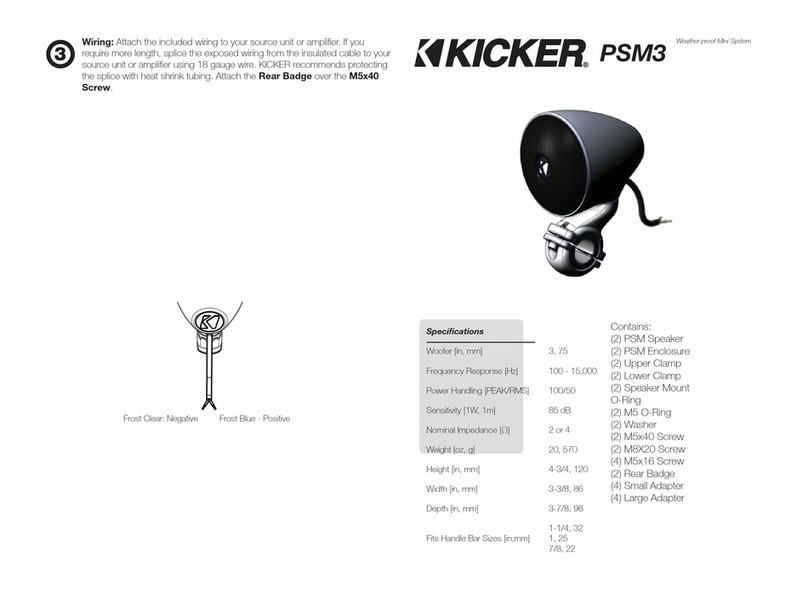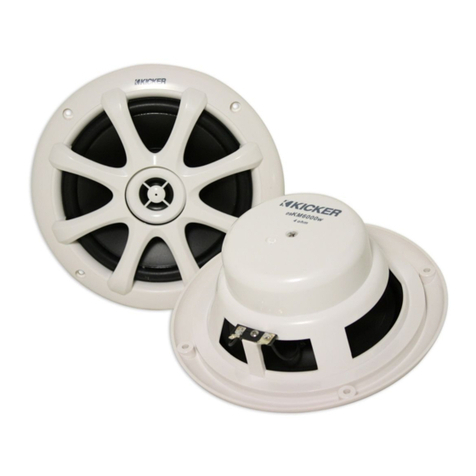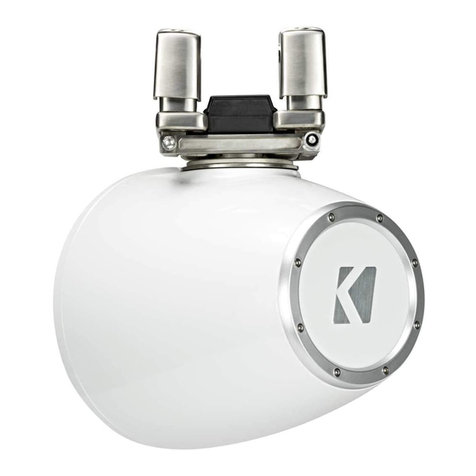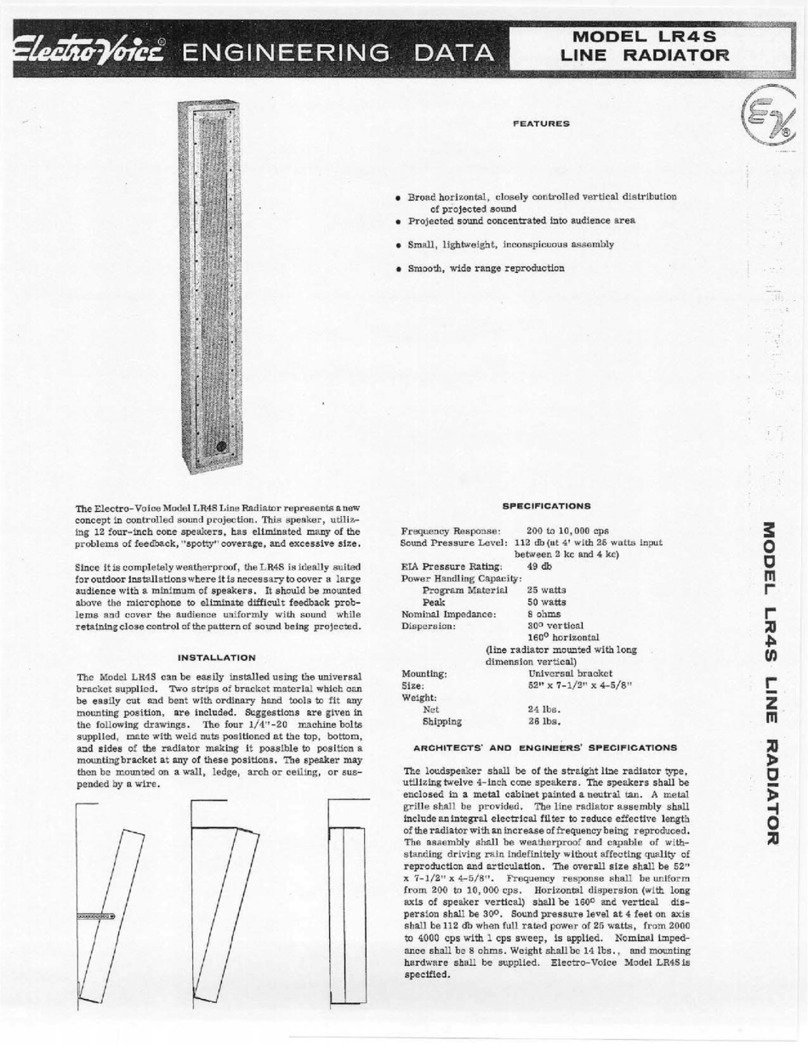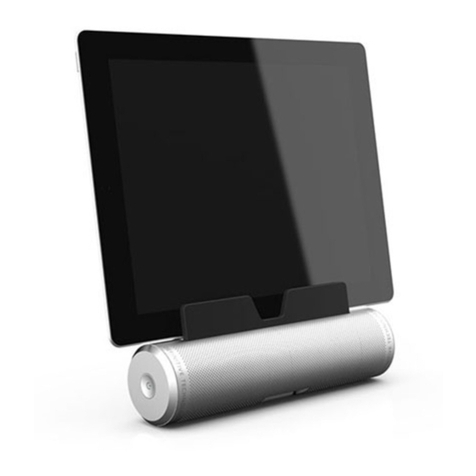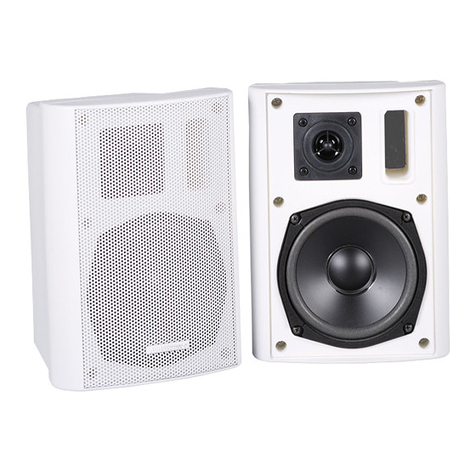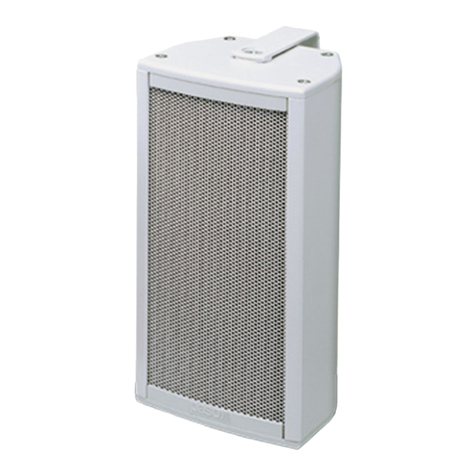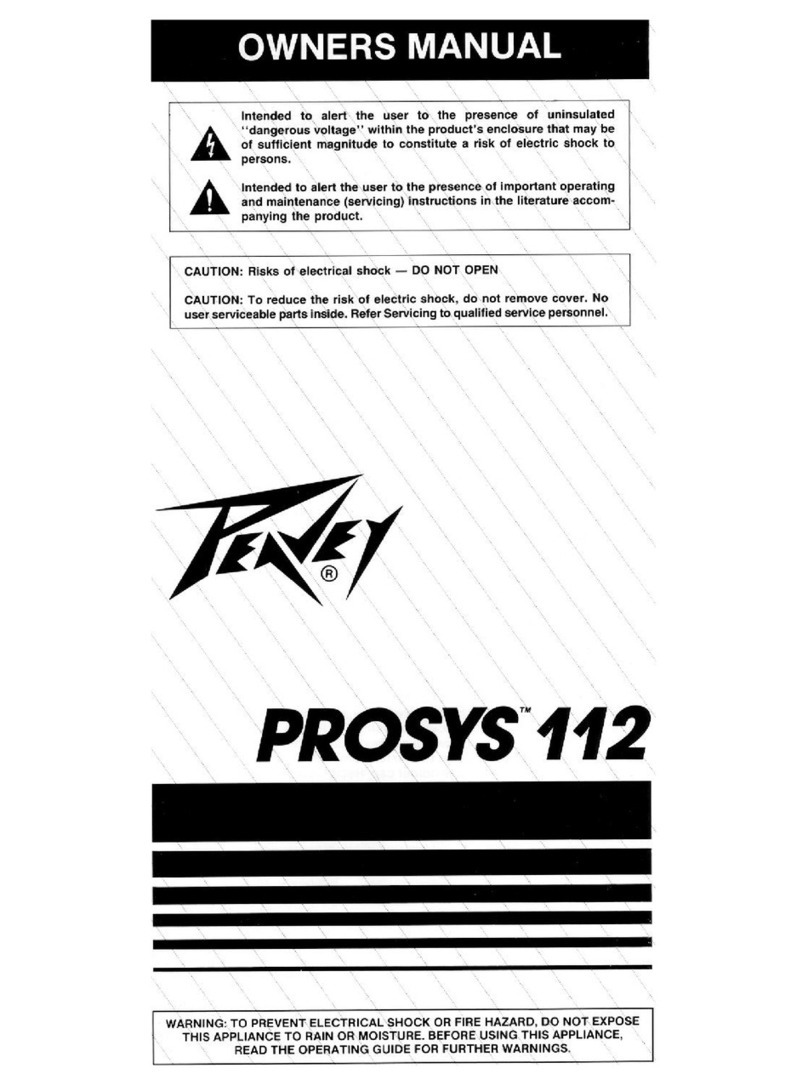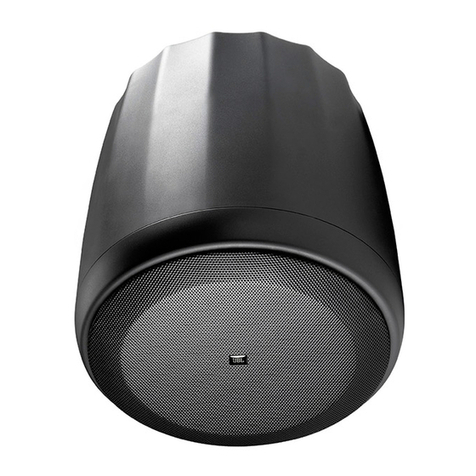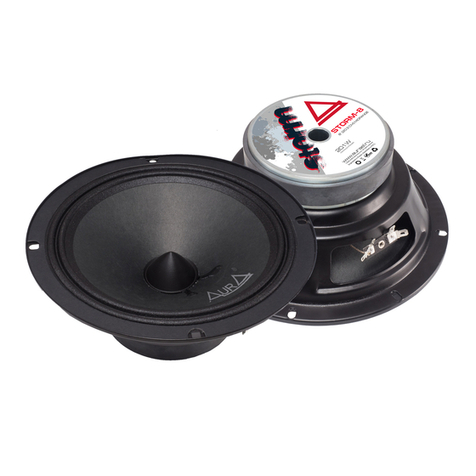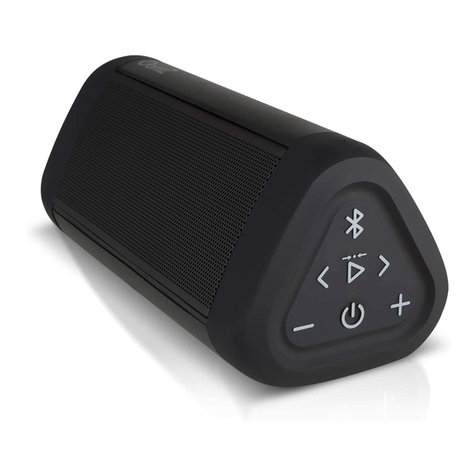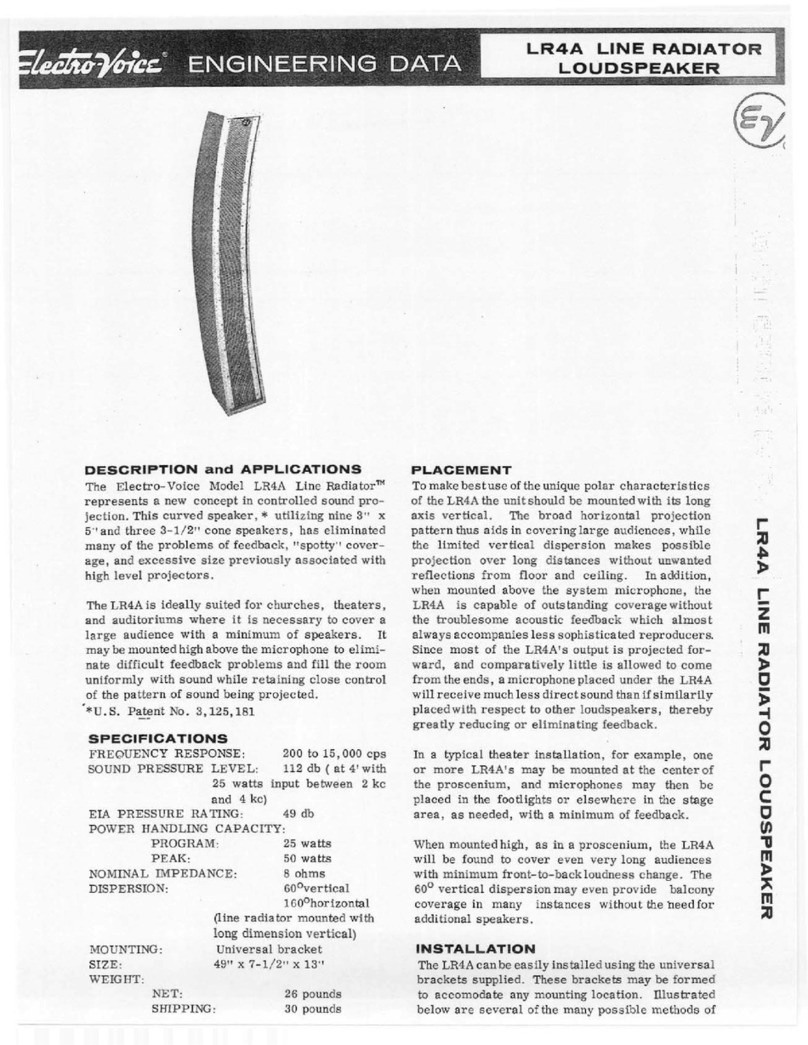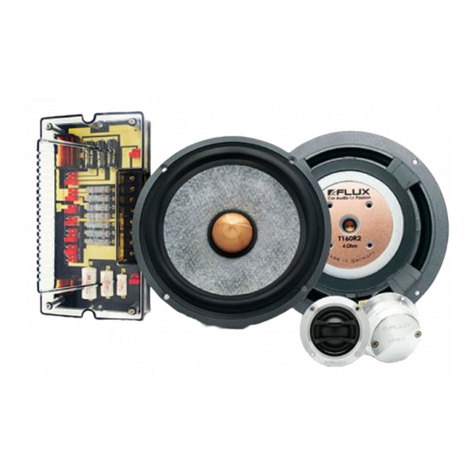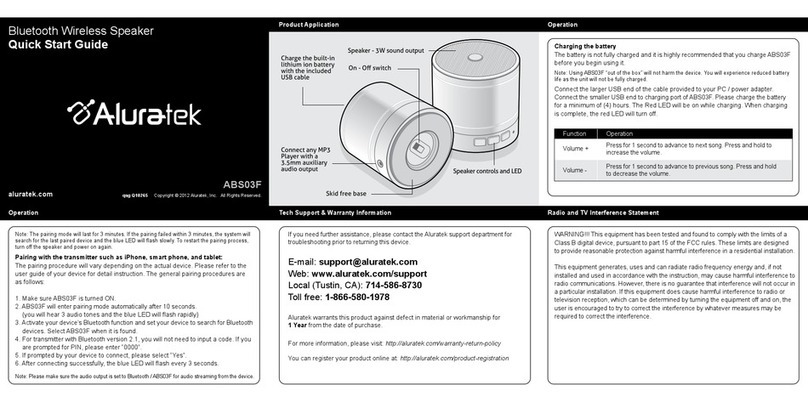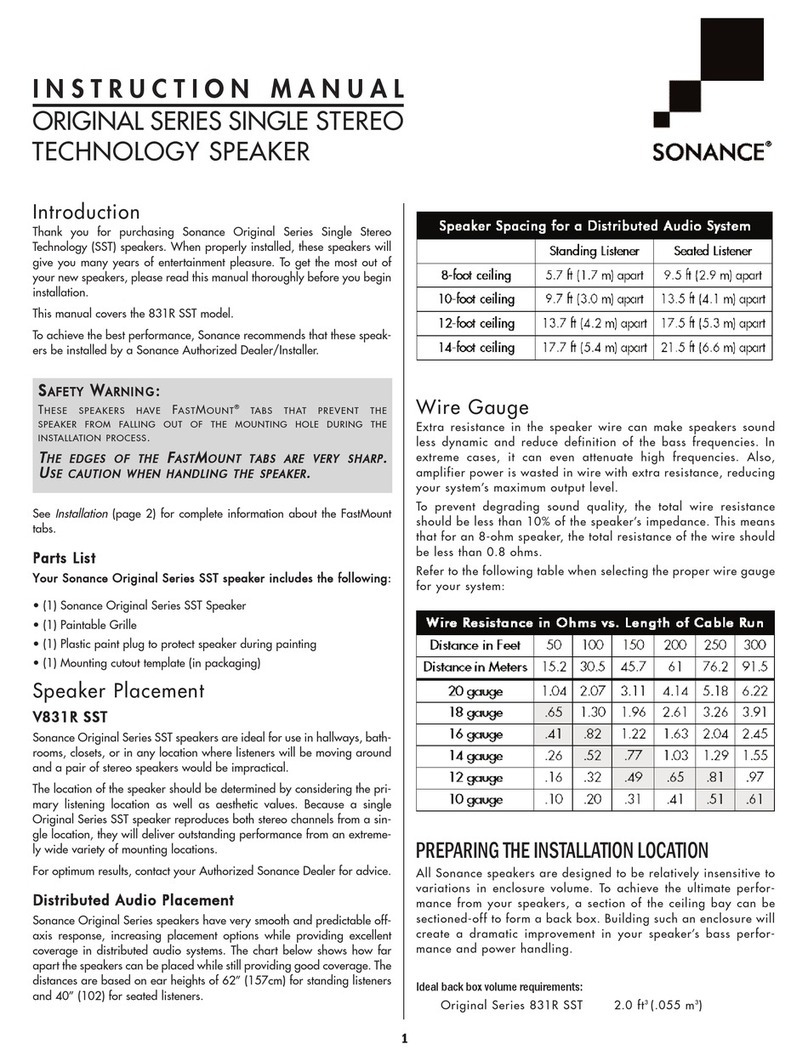
FEATURES
•Ultra Slim Midbass Drivers Gives you
real
low frequency output from factory locations. Never before have
you seen this amount of low end from the front of the car without adding an exotic subwoofer enclosure. They
are a mere 2 inches deep (SSMB6) and 2 1/4 inches (SSMB8).
•Tri-Tech™ Cone with Röhm Rohacell® Foam Sandwhiched cone material of foam, poly and woven carbon
fiber. Provides a very light yet very strong cone for extended frequency response and superior cone control over
the midbass’ entire operating range. This new high-tech cone is found in our new SS component systems as well.
•Santoprene Surround Tough, flexible surround with long throw capability to control extreme cone excursions.
Santoprene also holds it’s shape well over time, is moisture and UV resistant and offers excellent damping.
•Blackened One-Piece Motor Structure Provides enhanced heat transfer for cool operation and maximum
power handling. The heat is transferred from the pole-piece to the back plate, effectively acting like a radiator in an
engine. This lowers the operating temperature of the voice coil.
Note: The increase in temperature increases the
impedance of the speaker.
This results in lower output and is referred to as Power Compression.
—High-Temp Kapton®Voice Coil Former Heat is the primary enemy to the life of a speaker, which is one of
the reasons we use Kapton® voice coil formers. Kapton® is a man-made product that is light, durable and is very
efficient at thermal heat transfer. The Kapton® former does not retain heat and allows it to easily pass to the pole-
piece. This prohibits the heat from breaking down the glue joint between the former and the cone or the former
and the coil windings. During high excursion and prolonged exposure to heat, Kapton® holds it’s shape and does
not expand or contract. As a bonus, Kapton® is also a very quiet material during operation and does not discolor
the music by adding unwanted sound.
—LPOD ( Low Profile/Open Design ) Basket. The basket not only looks impressive, but it is extremely
functional. This stamped steel basket provides a solid anti-resonant foundation for the motor assembly insuring
that all the parts work together in harmony and prevent shifting or misalignment. Without a solid foundation, the
speaker’s various parts could shift under extreme excursion causing premature failure and add unwanted noise to
the music. If misaligned, the voice coil could rub the inner wall of the motor structure thus exposing the bare
windings, which would cause speaker failure. The same thing happens if the coil former rubs the pole-piece. The
damaged former exposes the windings causing speaker failure. When other speakers are pushed to their limits
they tend to make noises that add coloration to the music. When your LIVIN’ LOUD you only want to hear the
music the artist intended you to hear, NOT a bunch of unwanted ringing.
•Spring Loaded Nickel Plated Terminals On a High Performance Midbass like the SSMB Series drivers, you
would expect nothing less than a High Performance terminal. They allow the installer to use the maximum gauge
wire to minimize power losses for the ultimate midbass response extension in the front of the vehicle.
Features
Kicker SSMB Series Midbass Drivers
Recommended Applications / Version 2.0
Page 2

